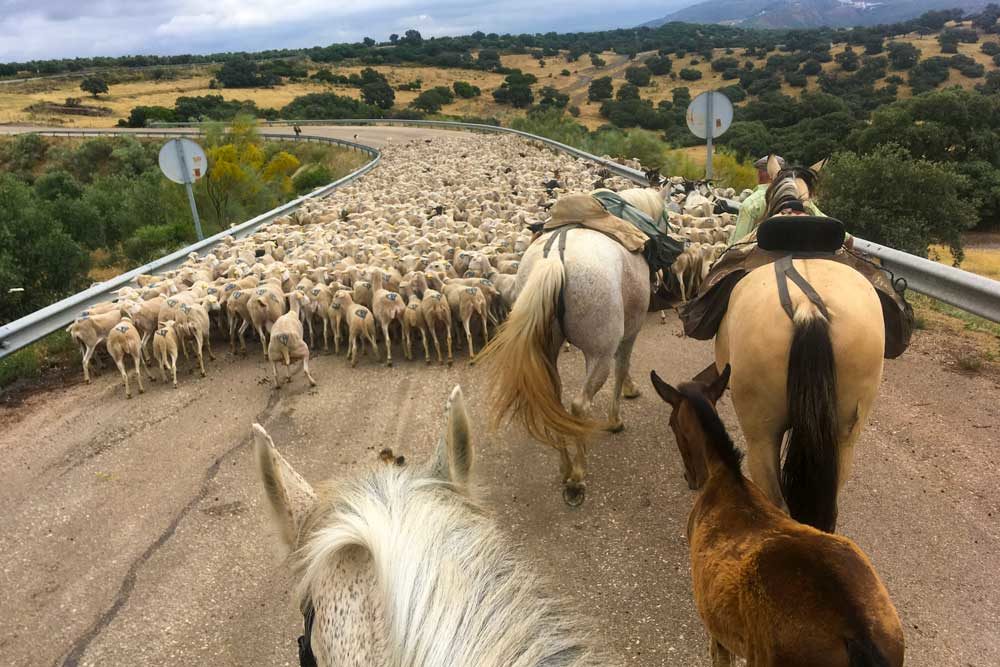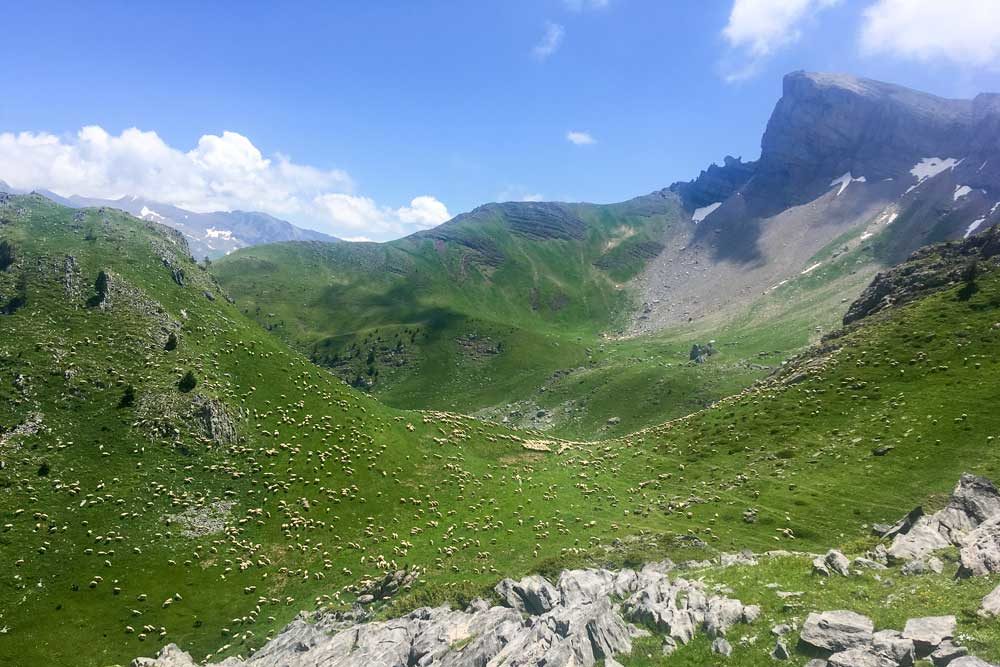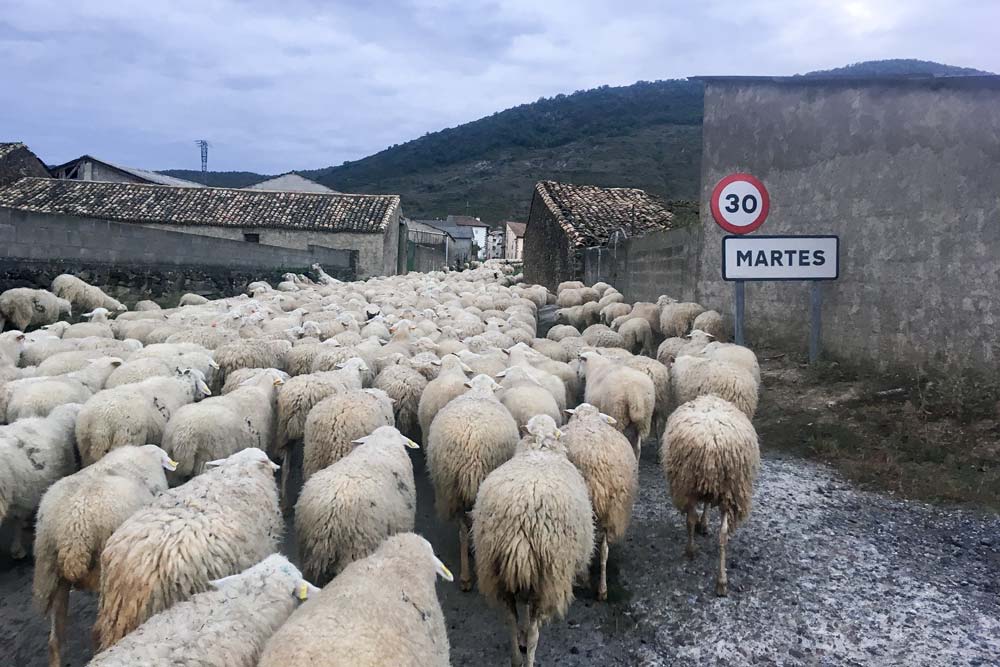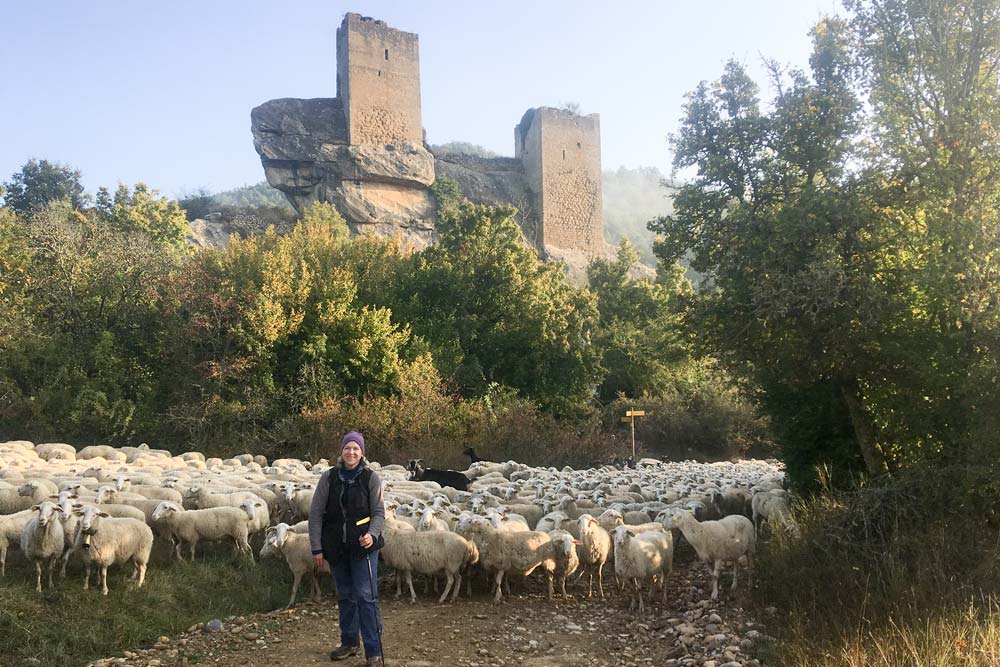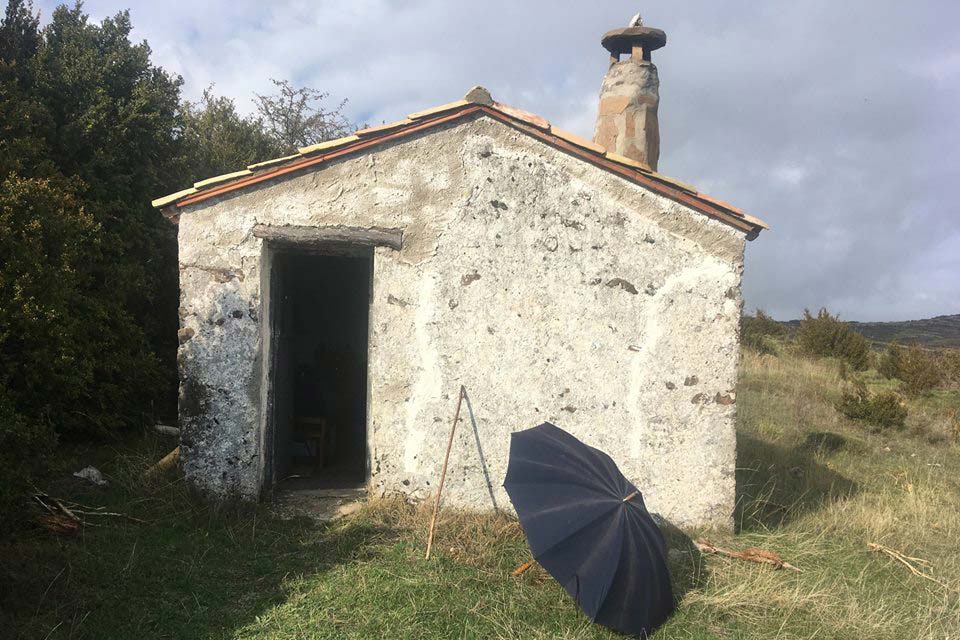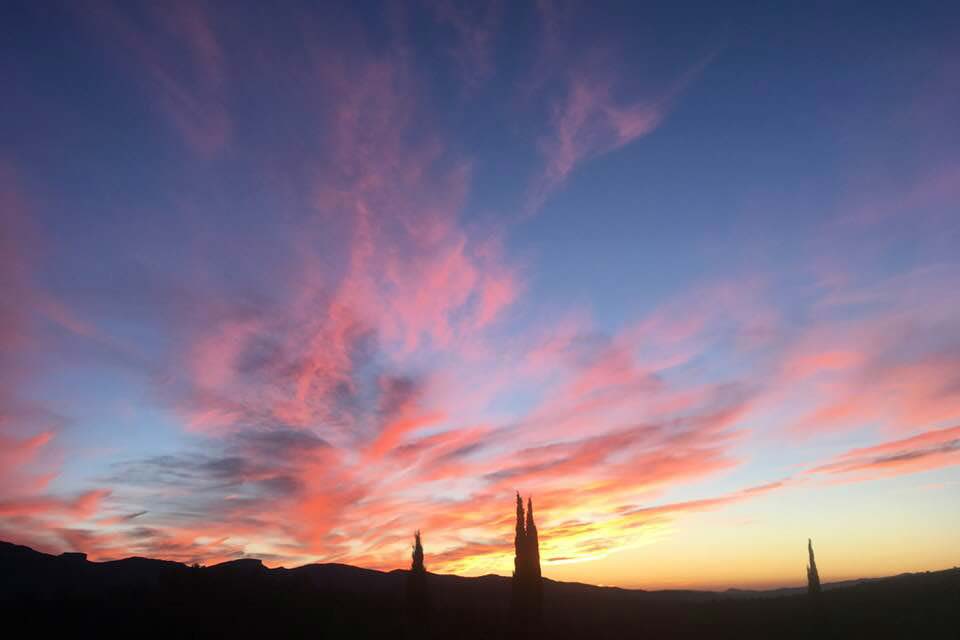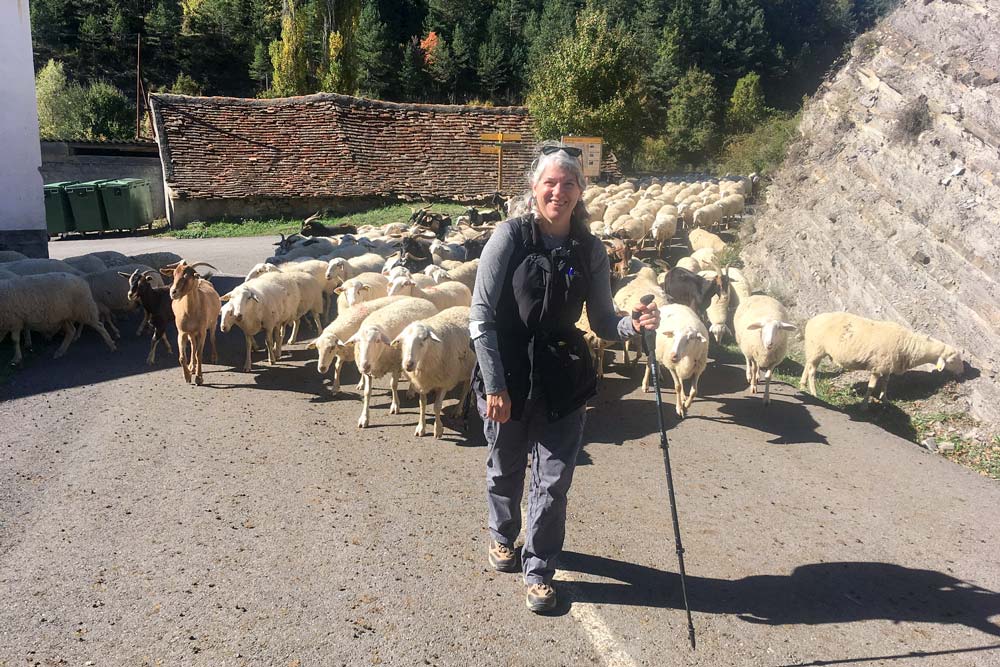
By: María Fernández-Giménez
“Back to the future” could be the theme of my sabbatical. Spending my days immersed in the life of Spanish herders takes me back to my ethnographic research roots. I’m inspired to dream of new paths for research and action that support the ancient but timely practice of transhumance, or long-distance seasonal cycles of moving livestock from summer to winter pastures and back.
My method is participant observation: taking part in the activity—transhumance–that I am also observing and studying. In June, I completed a 10-day trek with shepherds and their flock through Andalucía, Spain. In October, I walked for 5 days with another transhumant herder from the Pyrenees Mountains to the Ebro River Valley. I also accompanied different herders on three day-long walks from mountains to lowlands ahead of winter snows. Although I have interviewed herders for years, only by walking with them have I come to appreciate the breadth and depth of the knowledge, skill and dedication needed to keep this practice alive.
Although there is plenty of outdoor eating, transhumance is no picnic. During the summer, it was a grueling routine of rising before dawn, hitting the trail at sunrise, and walking until sunset (around 11:00 p.m.), with one long break to allow the sheep to graze and rest during the midday heat. We shepherds joined the sheep for long siestas in the grass under an oak tree’s shade. I was surprised how soundly I slept on the ground after a few days of walking for 10 hours a day and sleeping 5 hours a night. Water was scarce and baths consisted of a dip in a muddy river on day 4 and a swim in a chilly reservoir on day 7.
More important than the physical discomforts for humans, herders must secure food and passage for their flocks along the way. A 1996 Spanish law protects shepherds’ rights to trek their sheep along ancient stock drove roads known as cañadas and veredas. Herders depend on these rights-of-way for forage to sustain their flocks during the trek, and space to camp and rest. Yet these trails are often poorly marked and maintained, encroached by farmers’ fields, overgrown by thorny shrubs, or converted to paved highways.
This complicates route-finding and creates challenges for shepherds, who spend dusty days running alongside the stream of sheep to keep them from entering sown fields and olive groves. To make matters worse, herbicides commonly used by farmers and highway crews are lethal to sheep, sometimes causing dozens of deaths.
Despite such hardships, the shepherds who continue transhumance are often highly committed to and proud of their practice and its heritage. Many are convinced of its profitability, animal health and ecological benefits compared to more settled production systems.
To maintain the viability of ancient routes, shepherds’ social skills come into play. The herder I accompanied in October was a great example. Everyhamlet we traversed greeted him warmly. In one, villagers brought us coffee and cake during our midday break. In another remote village, a welcoming committee met us with drinks and snacks at the end of a long, wet day. A widow who remembered the shepherd’s father and grandfather invited us to sleep in her barn—much appreciated on that rainy night. The next morning, the shepherd gave twogoats to a couple starting a new farm. I witnessed similar exchanges with other shepherds: an offer of free pasture for the night and a promise of a Christmas lamb in thanks.
As a researcher, living the work, discomforts and camaraderie of the trail alongside the shepherds I am studying offers me a window into their lives that dwarfs what I can learn through an hour-long interview (or 20 interviews). Along with its value for science, participant observation can build trust and friendship. Ultimately, this method can foster science-management partnerships that seek creative solutions and sustain ancient traditions such as transhumance that are still relevant to conservation today.
On a personal level, the chance to connect more deeply with the people, places and animals I study is satisfying and inspiring. Finally, long days following sheep through changing landscapes offer time and space for creative contemplation and intellectual rejuvenation—a key aim for a sabbatical.
|
Professor María Fernández-Giménez is a 2018-2019 Fulbright Global Scholar. The title of her project is “Co-creating Knowledge for Action with Mobile Pastoralists in Spain, Morocco, and Mongolia.”
|
